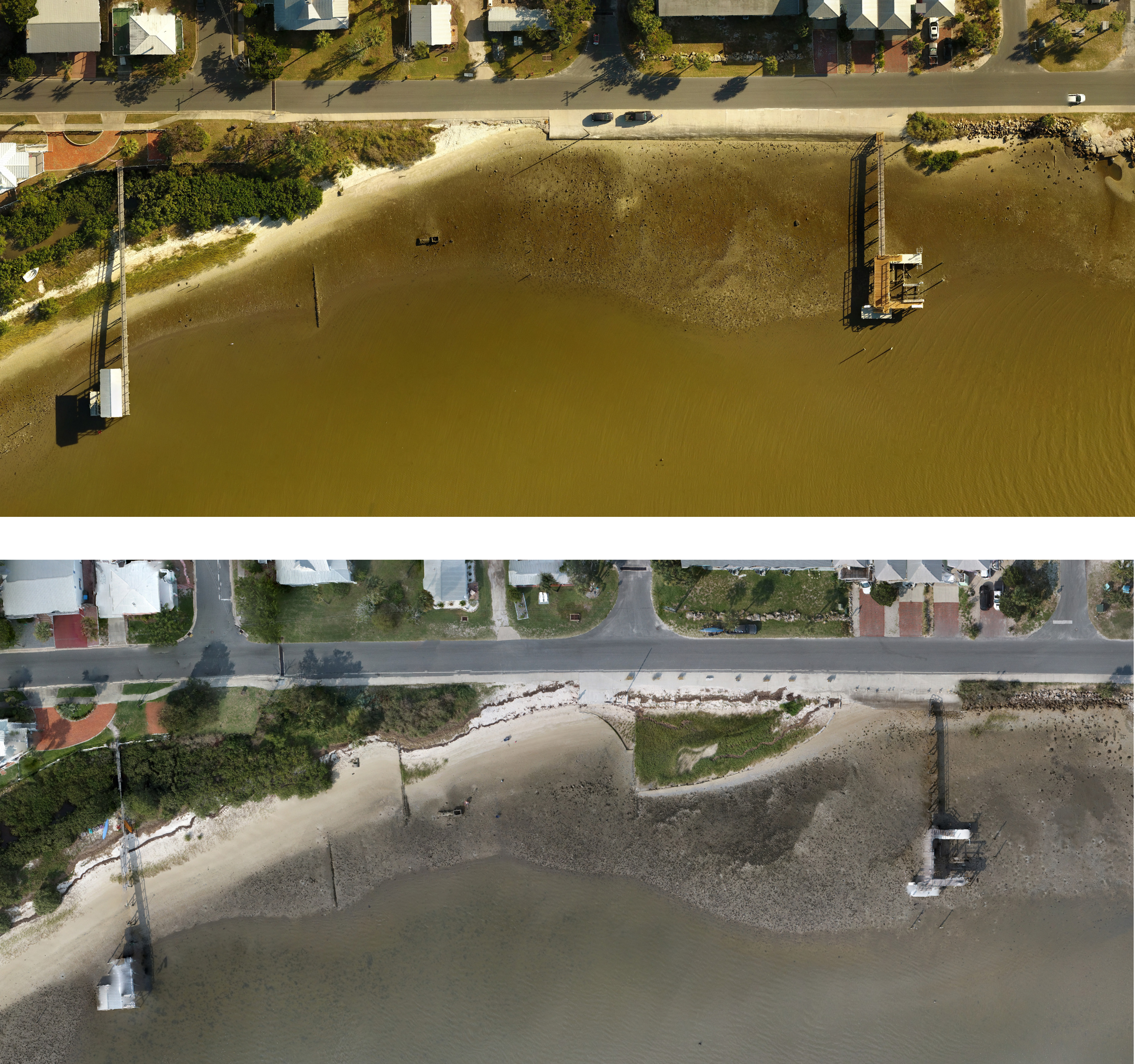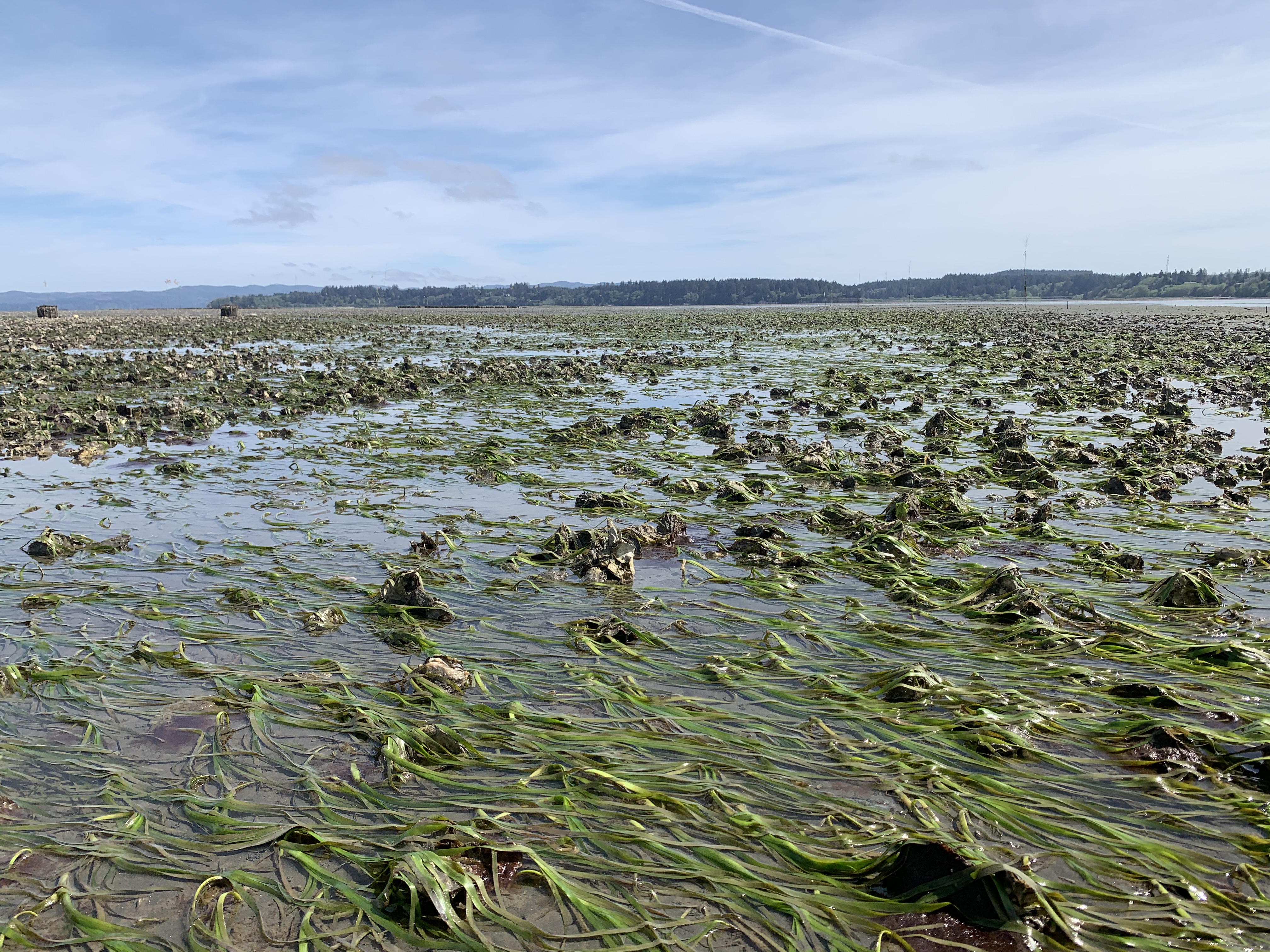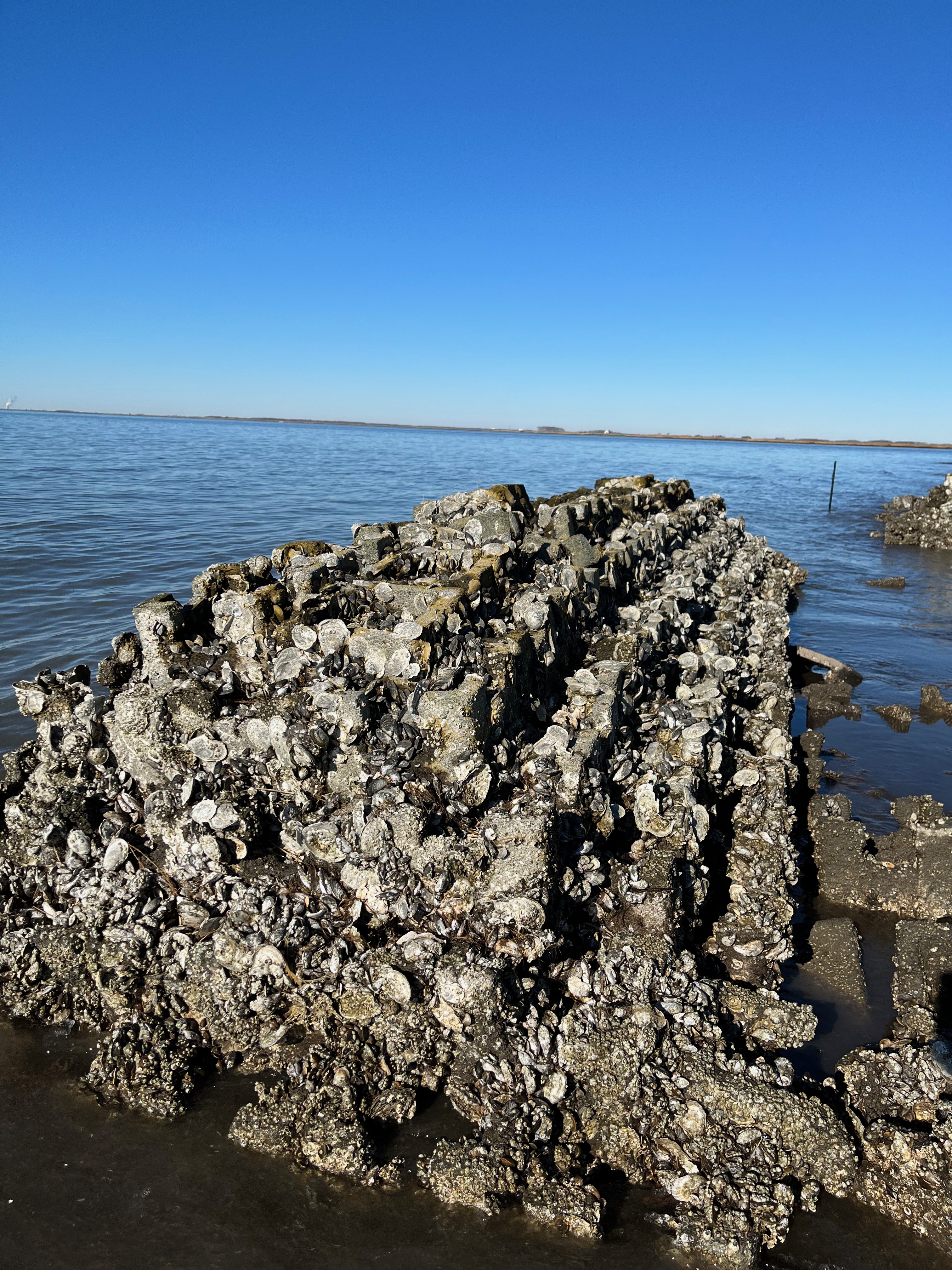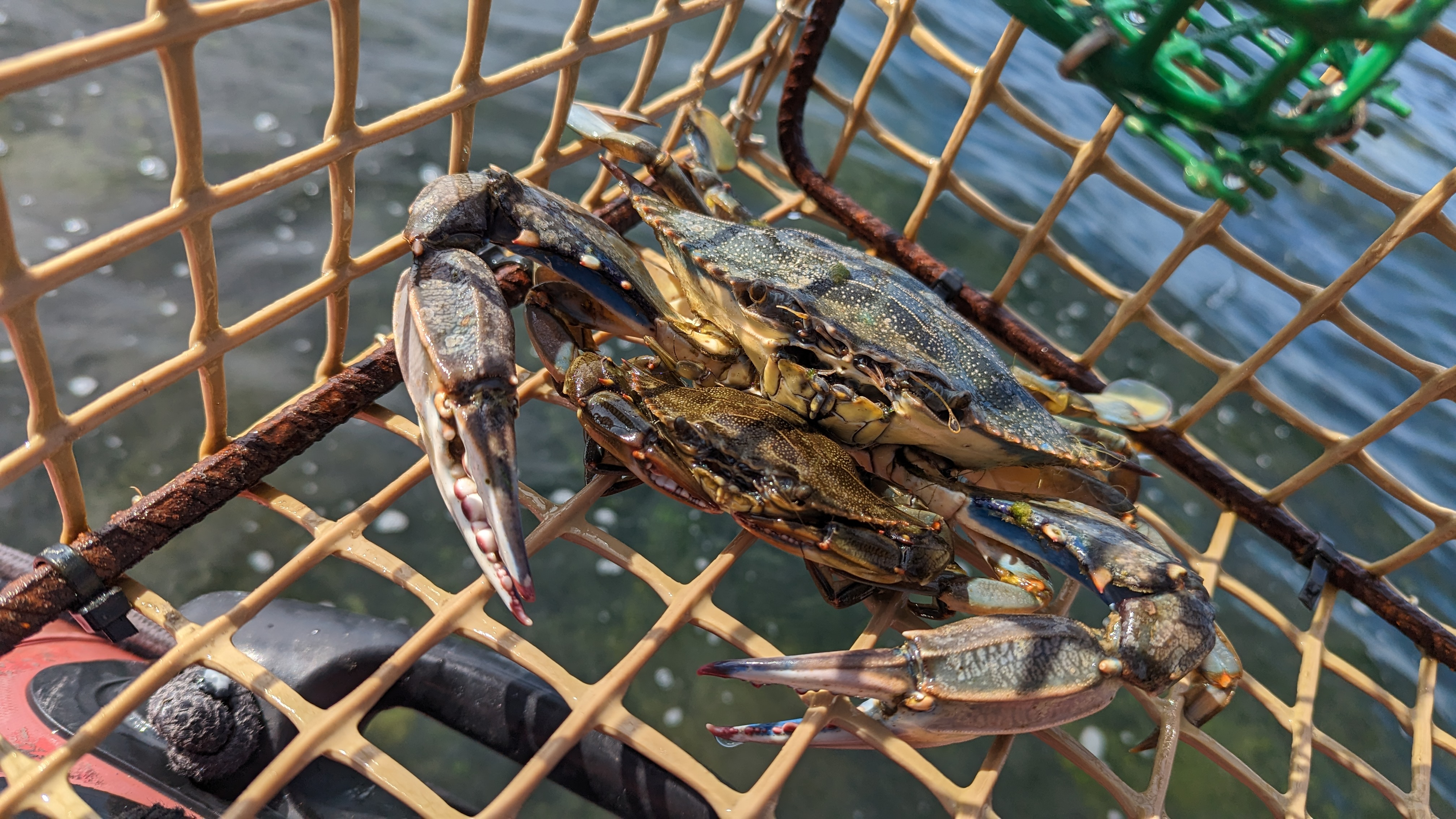- About
- Affiliates
- Join
- Publications
- Estuaries and Coasts
- CERF's Up! Quarterly Bulletin
- Coastal & Estuarine Science News (CESN)
- CERF-Lit
- Advertising
- Programs & Events
- Inclusive Culture
- Communities
Coastal & Estuarine Science News (CESN)The mission of Coastal & Estuarine Science News (CESN) is to highlight the latest research in the journal Estuaries and Coasts that is relevant to environmental managers. It is a free electronic newsletter delivered to subscribers on a bi-monthly basis. Sign up today! 2025 Issue 1Table of ContentsCan Living Shorelines Be Used to Retrofit Armored Structures? Can Living Shorelines Be Used to Retrofit Armored Structures? Enhancing shore protection and providing habitat in Florida
Researchers working in Cedar Key, Florida, evaluated the performance of three living shoreline retrofit projects installed in addition to existing armoring at sites that each included mixtures of dunes, mangroves, and high and low marsh. Although the projects had different living shoreline designs, they all encompassed higher elevation zones and required some amount of sediment fill to increase elevation and allow for planting. Changes in elevation and vegetation communities were tracked over several years, and wave attenuation was measured during typical conditions as well as extreme events, including landfall by Hurricane Idalia. Overall, the projects were successful at bolstering hardened shorelines and enhancing vegetation habitat functions—even with impacts from multiple hurricanes and tropical storms. In general, vegetation cover increased at all three sites. Wave energy was attenuated between 33 and 79% under typical conditions—and by up to 28% in Hurricane Idalia—even outperforming armored sites. Elevation change was observed around the hardened structures, and sediment was lost over time: Higher elevation sediment moved into lower elevation areas due to storm impacts, and sediment was also transported by longshore drift. Most existing research on living shorelines captures dynamics occurring in low intertidal zones, and little is known about the performance of designs that involve restoration of higher intertidal and upland transitional elevation zones—especially the long-term performance of retrofit designs built along existing armoring. Here, tropical systems impacted higher elevation zones more than lower zones in terms of sediment export and loss of vegetation extent. In particular, sediment volume was stable (or even increased) in lower intertidal zones at all three sites despite overall sediment loss. This indicates how enhancing higher elevation coastal habitats presents an added challenge, especially as weather patterns become more extreme. Source: Barry, S.C. et al. 2024. Performance Assessment of Three Living Shorelines in Cedar Key, Florida, USA. Estuaries and Coasts. DOI: 10.1007/s12237-024-01440-w Image: Living shoreline project area before implementation (top) and three years post-implementation (bottom). A sill structure was filled with sand and planted with native coastal vegetation and two reefs provided oyster habitat / Barry et al. 2024 How Mechanically Harvesting Oysters Affects Seagrass Recovery Timing is everything
To understand how disturbance timing and eelgrass life history affect resilience, researchers utilized scheduled large-scale disturbances resulting from the mechanical dredge harvesting of Pacific oysters (Magallana gigas) in six contiguous on-bottom culture beds in Washington’s Willapa Bay. The researchers compared eelgrass recovery when harvesting occurred during the early growing season (January–April), late growing season (May–September), and non-growing season (October–December). Overall, eelgrass recovery was heavily influenced by the timing of disturbance: Recovery was much higher—with more than double the shoot density 200 and 400 days later—when beds were disturbed during the early growing or non-growing seasons rather than the late growing season. This is due to the fact that, compared to branching (or clonal reproduction), seedlings are more important for recovery after shoots and rhizomes are removed. Early in the growing season, seedlings can emerge and grow to adult shoots, whereas disturbance later in the growing season removes seedlings that germinated that spring. Although disturbance during the late growing season had no effect on seedling density, flowering shoot density from the previous summer was a strong predictor of seedling density the following spring. To support a resilient eelgrass population alongside sustainable oyster aquaculture, this research suggests that mechanical disturbances should be restricted to non-growing or early growing seasons and should not be repeated annually in the same location. Source: Boardman, F. C. & J. L. Ruesink. 2024. Eelgrass (Zostera marina) Recovery Affected by Disturbance Timing on Mechanically Harvested Oyster Culture Beds. Estuaries and Coasts. DOI: 10.1007/s12237-024-01454-4 Image: Eelgrass on an oyster culture bed / Fiona Boardman A Constructed Oyster Reef Seven Years In There is no one-size-fits-all solution
As a response to shoreline degradation caused by Hurricane Sandy, 40 CORs consisting of shell bags and concrete blocks were installed along Gandy’s Beach Preserve in New Jersey. The goals were to simultaneously provide coastal protection and habitat provisioning. As an additional consideration, CORs were built with large enough gaps to ensure the successful passage of American horseshoe crabs onto the beach. Over seven years, researchers measured elevation, wave attenuation, extent of vegetated habitat, oyster density and size, nekton richness and community composition, and whether horseshoe crabs were hindered. The CORs met most of their habitat improvement objectives: Even though more vegetation area was lost than gained, the reefs were quickly colonized by multiple generations of shellfish and created habitat for nekton species and commercially important fish. Additionally, 88% of horseshoe crabs trapped at low tide were able to free themselves during the subsequent high tide. However, none of the coastal protection project objectives were fully achieved. Overall, losses in shoreline elevation outpaced the gains. Concrete block CORs lost an average of 20 centimeters of elevation over the course of the study, though they remained more stable than shell bag CORs. Waves were attenuated on average, but at times, wave heights increased after passing over the breakwater, especially when they were submerged with the tide. Ultimately, the scale and extent of the structures were relatively small when considered within the context of the hydrodynamic setting of the site, limiting the ability of the CORs to facilitate sediment accretion or increase vegetated areas at the landscape scale. Long-term monitoring of created structures is needed, particularly in the face of changing conditions. The results further highlight how the spatial and structural scale of the nature-based tactic must match the needs of the site. Source: Shinn, J.P. et al. 2024. Seven Years of Monitoring the Development of an Oyster Reef Living Shoreline. Estuaries and Coasts. DOI: 10.1007/s12237-024-01437-5 Image: Oysters colonizing concrete breakwater structures four years post-installation / Jenny P. Shinn The Atlantic blue crab in a Spanish Lagoon
Blue crabs are omnivorous, and they adapt to what they find in the invaded habitats. In the case of Mar Menor lagoon, stomach content analysis revealed a strong preference for consuming crustaceans, fish, and bivalves—impacting the lagoon food web and making them a severe threat to this ecosystem. Not only do they prey on native species like the Mediterranean green crab and long-snout seahorse, they also eat up striped prawns (one of the main target species for the local artisanal fishery) and protected bivalves (a significant part of the diet of seabream, the most valuable fish species targeted in the lagoon). In terms of their reproductive strategy, researchers found that female crabs in the lagoon become sexually mature at a smaller size than those in their native Louisiana, Texas, and Brazil, reducing their generation time. This may contribute to their population increase despite the low number of eggs per female (since egg production is correlated with size) and the colder water temperatures, which narrow the window for reproduction. Although this study is site-specific, managers elsewhere could use similar methods to investigate how invaders in a lagoon environment displace ecologically and economically valuable species through predation and competition for food. Source: Vivas, M. et al. 2024. Effect of the Invasive Blue Crab (Callinectes sapidus Rathbun, 1896) in a Protected Coastal Lagoon. Estuaries and Coasts. DOI: 10.1007/s12237-024-01436-6 Image: Jon Lemona |




